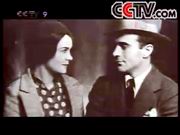 Back in 1920s, a lot of young Americans were having a romantic ambition with literature, and travelled to France to pursue their dreams. Helen Foster, a girl of beauty and talent in her early 20s, however, made up her mind to come to China after reading reports written by Edgar Snow on this ancient land. Far beyond her expectations, this was a decision that changed her life forever. Back in 1920s, a lot of young Americans were having a romantic ambition with literature, and travelled to France to pursue their dreams. Helen Foster, a girl of beauty and talent in her early 20s, however, made up her mind to come to China after reading reports written by Edgar Snow on this ancient land. Far beyond her expectations, this was a decision that changed her life forever.
In August, 1931, Helen Foster said farewell to her parents, and left for Shanghai, the biggest port in China.
As soon as she arrived in China, she began to witness how this ancient
civilization was humiliated and tortured by Japanese invaders. The homeless were everywhere, helpless mothers were weeping and hapless children were wailing. Deeply shocked, Foster took many pictures on the sufferings of the Chinese people with the Kodak camera given to her by her mother. She later had them published in American newspapers.
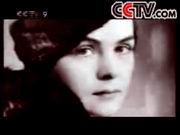 On her second day in Shanghai, Foster arranged to meet and interview Edgar Snow, an American journalist she greatly admired.
On her second day in Shanghai, Foster arranged to meet and interview Edgar Snow, an American journalist she greatly admired.
Affection was being exchanged in the eyes of Ed and Helen. Edgar said Helen was just like a girl next door. In 1932, the young couple married on a simple wedding.
Following their wedding, Edgar and Helen Snow left boisterous Shanghai and settled in Beijing, the ancient capital of China. Employed by Yenching University as a lecturer in journalism, Edgar converted their courtyard in suburban Peking into a club for foreign journalists and progressive Chinese students. Many of these students later became the cornerstone of the revolution in China. In the process of helping Chinese students to organize events, Edgar and Helen were greatly inspired. They were driven to participate in their cause out of sympathy. Since 1935, they had been writing on the Japanese invasion for the foreign press. They also helped to have works of patriotic students delivered overseas by foreign journalists.
A patriotic demonstration against the Japanese invasion broke out among students in Peking on December 9, 1935.
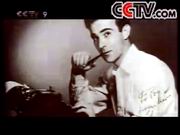 In the spring of 1936, Edgar Snow asked Song Qingling, his old friend, to arrange a visit for him to the Soviet Area in northern Shaanxi.
In the spring of 1936, Edgar Snow asked Song Qingling, his old friend, to arrange a visit for him to the Soviet Area in northern Shaanxi.
Having broken through all the barricades, Edgar Snow and George Hatem rode to the Soviet Area on mules, and Snow became the first journalist from the West to be in the Soviet areas in Shaanxi, Gansu and Ningxia. Zhou Enlai, the would-be Premier of China, drafted a 92-day interview schedule for Snow. Just three days after Edgar’s arrival, Mao Zedong, the leader of the Communist Party of China, met with Edgar Snow.
Helen later commented that this picture was simply a masterpiece: it was the most printed and published in the world, and so even those classics of the Renaissance could hardly match it. Leaders of the Red Army trusted Edgar Snow as a truth-telling journalist from the West. Mao Zedong and Snow had their interviews in barely decorated cave-houses.
After Snow completed his interviews, Helen decided to go to northern Shaanxi by herself in order to get more news materials. She wanted to see with her own eyes what those so-called “Red Bandits” looked like and what kind of life people in that area were leading. At the time Helen arrived in Xi’an in April 1937, Kuomintang troops and secret agents had already controlled the whole city. Despite strict surveillance by Kuomintang soldiers, Helen managed to break out of her residence window, and then set off for northern Shaanxi in secret.
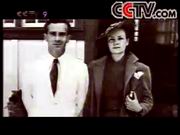 Helen put on the uniform of the Red Army as soon as she got to Yan’an. After interviewing dozens of military leaders, she turned to talk to female soldiers about their experiences in the Long March. Her pictures and manuscripts were later added to Red Star over China.
Helen put on the uniform of the Red Army as soon as she got to Yan’an. After interviewing dozens of military leaders, she turned to talk to female soldiers about their experiences in the Long March. Her pictures and manuscripts were later added to Red Star over China.
Red Star over China was published in October 1937. It was the first to break the decade-long news blackout enforced by the Kuomintang by telling the world about the revolutionary base led by the Communist Party of China.
Inside Red China was the result of the visit and interviews of Helen Snow in Yan’an. It was almost as good as its predecessor. As the war intensified, Edgar Snow turned himself into a battlefield journalist travelling between war scenes. This left Helen alone to shoulder a heavy burden. Conflicts and arguments became more frequent between them.
Helen Snow returned to the United States in 1940 due to the further widening of the Second World War. She was joined by Edgar Snow one year later after he had spent 13 years of living as a journalist in China. Filled with regret, Edgar Snow worked hard on their relationship and even bought them a cottage in Connecticut. Unfortunately, their relationship was not getting any better under the current environment.
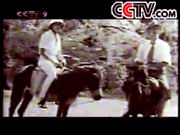 On October 1, 1949, Mao Zedong and his colleagues, these so-called “Red Bandits”, climbed up to the rostrum of Tian’anmen Square to announce the founding of the People’s Republic. In that same year, however, the relationship between this couple who loved China had come to the end. Edgar and Helen Snow, two of the best journalists specializing in the revolutions of China, divorced each other.
On October 1, 1949, Mao Zedong and his colleagues, these so-called “Red Bandits”, climbed up to the rostrum of Tian’anmen Square to announce the founding of the People’s Republic. In that same year, however, the relationship between this couple who loved China had come to the end. Edgar and Helen Snow, two of the best journalists specializing in the revolutions of China, divorced each other.
After the divorce, Edgar Snow married Lois Weller, an American actress. They had to emigrate to Switzerland to escape the persecution of McCarthyism, while Helen Snow retreated to her cottage in Connecticut and began to pursue her dream in creating great literature. During the rest of her life, Helen published 6 books on China.
No matter where they stayed, Helen and Edgar Snow were always attached to China. They kept talking, writing and researching about China. In 1960, Edgar Snow broke through mountains of obstacles to get back to China after being away twenty years. He visited a lot of places, from the cities to the countryside. He interviewed numerous people, from house wives to top leaders of the country. The China he saw was totally different from the one he lived in from 1928 to 1941. He strongly felt, the Red star was already shining over China. Again, he interviewed his old friend, Mao Zedong.
To credit her achievements in literature, China Writers’ Association and China Literature Foundation awarded Helen Foster with the International Literature Prize of Understanding and Friendship.
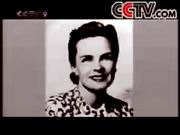 On October 1, 1970, Mao Zedong invited Edgar Snow, an American, to join him on the top of the rostrum of Tian’anmen Square.
On October 1, 1970, Mao Zedong invited Edgar Snow, an American, to join him on the top of the rostrum of Tian’anmen Square.
On February 1, 1972, President Nixon flew over the Pacific to visit China. The ice began to break between the two great nations that had been hostile to each other for two decades. This was just what Edgar and Helen had been dreaming about.
In the very week that ‘changed the world’ as President Nixon said in 1972 when he visited China, the physical condition of Edgar Snow began to deteriorate. On February 15, 1972, he passed away in Switzerland. In his final days, Edgar Snow wrote shakily in his notebook with the pen he had used for decades that, “I love China.” He wished that part of himself could remain in China always. In respect, his Chinese friends buried his ashes at Peking University where he used to teach, and held a solemn funeral in tribute to the author of Red Star over China.
In 1997, at the age of 90, Helen Snow left the world, and the cottage she had been staying in for decades. She had successfully achieved her literary dream by publishing tens of books on the Chinese revolution. She forever cherished her most unforgettable memories of her ten years in China.
|